Episode #15: How Scripbox Shapes its Content Marketing Strategy in the FinTech Space
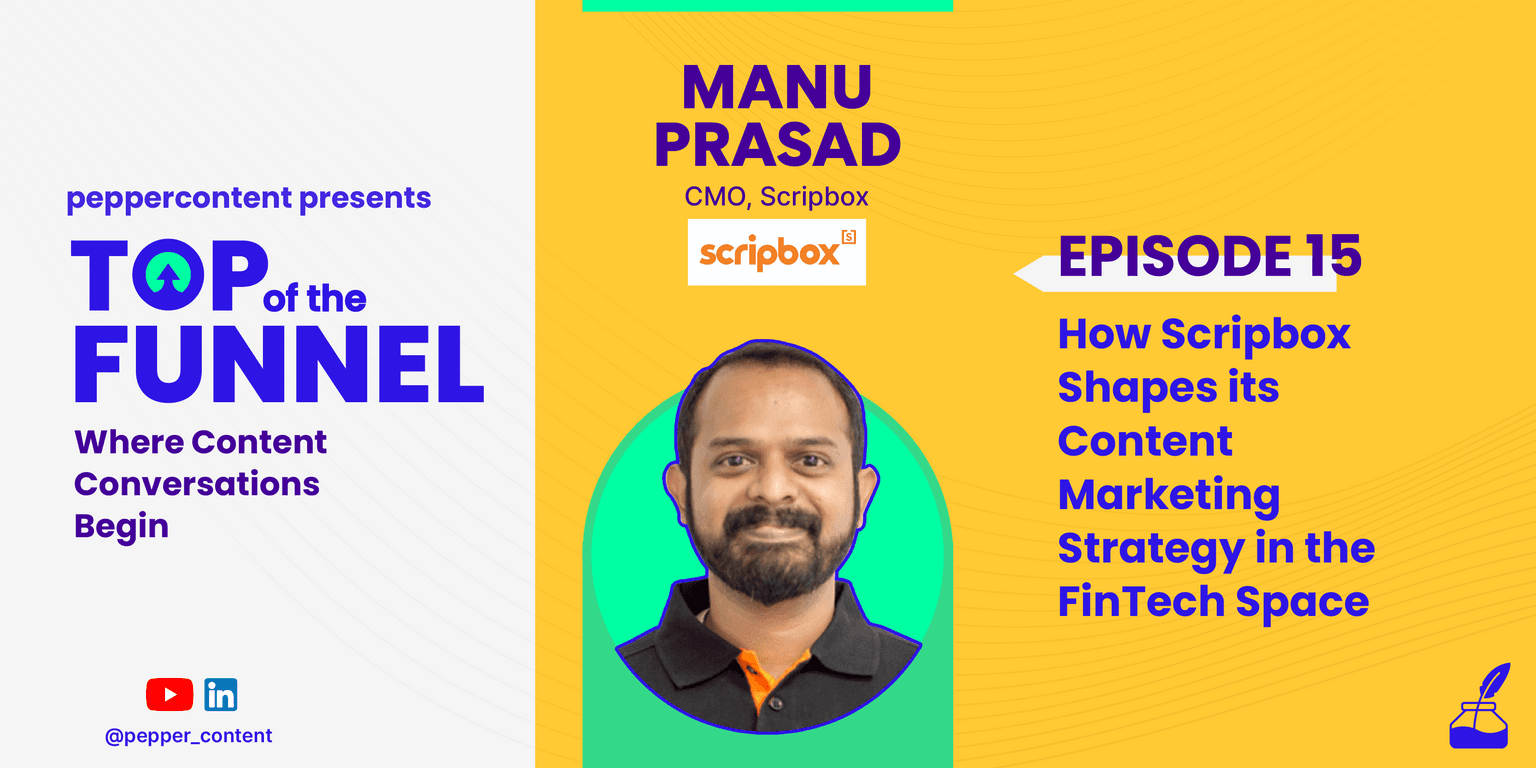
Content marketing in the fintech space aims to move them down the sales funnel with educative content. People expect transparency and authenticity before making a huge investment. Fintech companies could market educative content to highlight their audience’s pain points. As these would help steer customers’ buying decisions, it would build trust between the company and the audience. This trust converts to leads and eventually drives the business.
Scripbox, India’s leading digital wealth management service aims to deliver a holistic view of investments and personalized recommendations to foster a better user experience. They are known for creating simple user experiences in a complex domain. Manu Prasad, the Chief Marketing Officer at Scripbox, has been leading their marketing team for a while now. He has also worked with brands like Myntra and Urban Ladder in the past. Natasha Puri, Content Marketing Lead at Pepper Content, talks to him about the importance of content marketing in the fintech space in this conversation. It promises to be very informative and insightful.
Natasha Puri: Hello everyone. Welcome to the Top of the Funnel, the series where conversations about content begin. Our guest today is Manu Prasad, the Chief Marketing Officer at Scripbox.
Let us dive straight into your very diverse and colorful career from Myntra to Urban Ladder and now, Scripbox in the Fintech space. I would love to know about your journey as a marketer. Could you tell us about the role of content, like how it has evolved through the past years?
Manu Prasad: At the risk of revealing how old I am, my content play started quite a few years back. On a personal axis, I began blogging in 2003. It has been almost 18 years of blogging now. I have been engaged in content production, at least micro-content since the very beginning. In the initial years, my roles were in domains where the content was the product. I worked with this company called Wall Space, back in 2003. You are probably too young to have heard about it. It was 40+ custom radio stations delivered on a single platform. Think of it as FM, but at home, as things were not portable then. You could tune it into any channel you would want. If you look at it in terms of content, there was super segmentation. The segmentation was in terms of the regional languages of India, from Hindi to Tamil, Bengali, and Malayalam, and also in terms of the genre of music that you are listening to, from rock to alternative rock, and even spiritual channels. All of it was put in one box.
After this, I worked with both media as well as the Times group. In Times Group, I worked with multiple products like Mirror, Crest, TOI, and so on. In that sense, the content was the product itself. As Mirror was built for a younger audience, I was also responsible for tweaking the content in terms of the audience that it would appeal to. We had Milli blogs contribution for music. Karthik used to work on those. We had VAT blogs for technology. We had gaming content written by an in-house writer. We had this entire square called the Campus Square, where reporters and journalists talked about things that mattered to the young audience. It was until 2010.
Before I grow older, I’ll your specific question about Myntra. Myntra happened a decade back. I was there from 2011 onwards. Fashion was not an everyday thing. You bought clothes only for occasions. The entire task in front of us was to make it a little more prevalent. How do you democratize fashion and make it more accessible for people? One of the first things that I did there was to start a blog. It was when Zara had opened a shop in Bangalore, the first store in India. It was a big thing for all fashion offices, as Zara was a major brand then.
We started a blog only because we wanted to be a bit more social. We were trying to figure out the kind of content that we will put on the blog, about the brand, but primarily about fashion, what we wanted people to focus on. A bunch of these blogs and the infamous, ‘How do you get a Celeb Look’ was trendy. This may seem super commonplace now, but I am talking about a decade back. We used to run hashtags that trended regularly. We managed to convert people for which you cannot even imagine from a fashion point of view. I remember that we did a contest on Twitter on World Telecommunication Day. It was based on the T9 texting technology, as phones were also pretty old back then.
We had bloggers coming in to do tie-ups. They were just bloggers and not influencers. We had this section called Property and Stars, where Kalki, Chitrangada put on their ensemble on Myntra, and we did content around that like BTS, quiz, and so on. Now you may think Instagram shoots are basic. It was in the initial days of Instagram and it was difficult to prepare content for it. We made deals with the guys, who did product shoots with models to do 3 to 4 Exclusive Takes that we could post on Instagram. Youtube was slowly wading in the sphere.
Furniture was a very visual category. I got into Urban Ladder around 2014. We found lots of possibilities on Instagram then. We did something called US stories, which is Customer stories and how the furniture fits there. We also did Youtube.
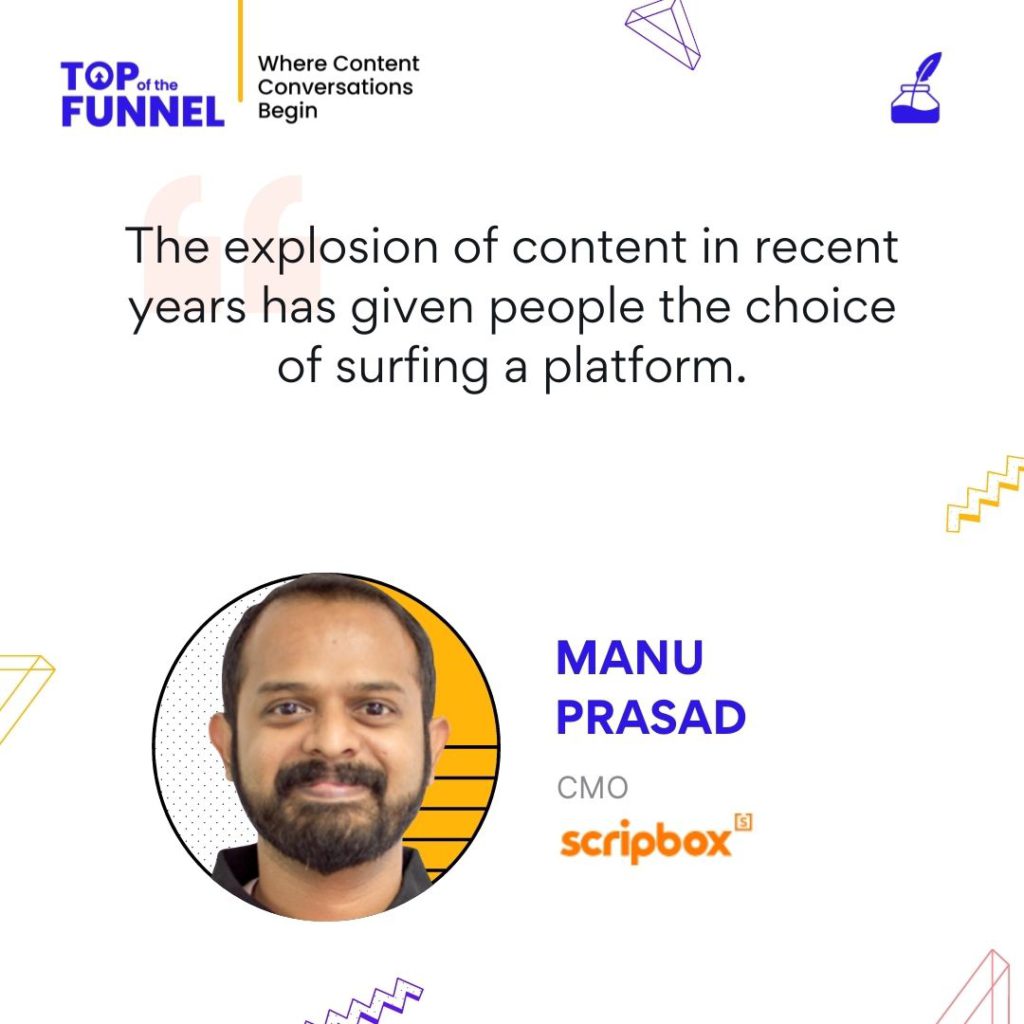
Natasha Puri: You guys had also done newsletters. I think we have used this as a reference for any company that we have worked with. How to make this newsletter happen and how to embed those amazing gifts and make them show up?
Manu Prasad: We had a fantastic team working for newsletters in Urban Ladder. It was a hard day when they did the motion thing by hand. If you look at it, you will wonder how did that create that little gif. But, it is that feeling that evoked customers. It was a huge hit.
Natasha Puri: I remember it after so many years. We used to wonder how to make such an amazing newsletter with those embedded images. Please carry on.
Manu Prasad: The visual product shots helped. As a customer, you did not have an influx of these newsletters back then. Today, people look at newsletters and just toss them aside, as every brand is doing newsletters. My health insurance sends me an email every day. Why would I want to remember you every day? But then, we are marketers. We try to make the most out of every resource. As for the second part of your question, rather than a shift, what I experienced was a continuum in terms of the content.
I have seen content play a range of roles, from demand generation to lead generation to engagement to conversion to retention, and pretty much everything in between. News outlets from daily newspapers to downloads, the aspect of distribution has changed completely. For newspapers, advertisements are different. It is still a very specialized play. You have customized newsletters. You have people going from expertise to subtract and going for paid newsletters, because of the expertise of their content. And, we are back to content as a product.
If we take movies, TV shows, or rather OTT shows, or music, a lot of the content is a by-product of behind-the-scenes. It is a by-product of the scene that you are creating. You are packaging it as behind-the-scenes and convincing people that it is also great content to watch. You have everything from motion picture uploads to the actual movie release. It is an entire process. The role of content has changed, been through a roller-coaster ride, and it continues to do so.
The next thing would probably be the format. As I was talking, it was really hard to create a custom gif. Now, you just have a phone and you can shoot images and videos, not only in terms of production but also consumption. You can get on Tiktok, create a video, and be your manufacturer in a second. It is no longer difficult to create and consume content.
The third thing is probably the freedom of choice. You can watch yoga sessions on a Youtube channel, on OTT, or switch to watching the next 10 things to stuff your face with. You have yoga content and eating content happening side by side. There is freedom of choice regarding the kind of content that you can consume on a platform. There is the fleeting nature of the content, from stories to Snapchat. Content that only stays for a certain amount of time, then you move on in life is also something that has happened recently. Earlier, when we used to produce content, the kind of effort, resources, and energy that went into it probably ensured its longer shelf life. Now, you shoot something, post it, and the next day it is gone. It exists in servers, but you do not see it in the larger world.
Functionality, freedom of choice, the fleeting nature of the content are probably some of the things that have changed in the past few years.
Natasha Puri: How did this happen, your shift from B2C-centric, colorful industries to Fintech? I can imagine that it was a great challenge and it would be a great appeal. But, let us talk about your transition to Scripbox for a little bit.
Manu Prasad: I have sold a lot of things online, fashion, furniture, and even lingerie. There is a company that I consulted with for some time. I think I am atoning for making people spend money on things that they should not be spending on, to now trying to make them save and invest money because I have also gotten older. If I have to bring it to the context of this conversation, technically only the designated content team is working with me on this.
If I look at all the teams that work with me- be it brand, PR, content, essentially all of their work revolves around content production of some sort, whether it is brand campaigns, call scripts, marketing automation paid marketing collaboration, communication, everything is content.
Scripbox is Fintech so you could call it wealth management, but it is B2C. It does not go into the B2B area. Overall, if you talk about all the work that I am doing, it is content, just the content user is changing, depending on who is working on what. Think of it from a customer’s perspective as well. The way that I see it, everyone would like to worry less about money. Everyone wants to have their finances sorted. We are actively searching for it. The discussion is around a transaction rate, as I call it. The search that most commonly appears could be future funds. It would be in the form of a long-tail keyword like How do I find a trusted financial advisor. If you begin typing ‘How do I’, the keyword ‘financial advisor’ would probably be in the second or third option.
There are two types of conversations around content that are running. Do you want blogs, sales pages, landing pages, or anything else? I am talking about the people, who are actively looking for something. Some people are not even looking. On a display channel like Facebook or Linkedin, what is the kind of content that would create a spark? In terms of brand, we do not want to create fear that you will die and your family will be on the streets, so you have to ensure your wealth. It is a very negative approach. Money is important in life, but you do not need to approach it from a fear perspective. You can approach it as you need to take care of your money to solve your problems, to live your life.
Now, you have two kinds of people, who are willing to hear you. How do you engineer the course after this? This is not an impulse purchase in that you have 10% off and you buy insurance. It is not that kind of a decision. So, how can you help customers with making that kind of decision?What are the things that are important for a customer? What is the role of content here? What kind of educational content you can put out, whether it is housing or child education? How can you aid them?
Our blog has around 1000 different articles on aspects of plans like retirement, childhood, education, and so on. Youtube also has quite a lot of specific content along with investment biases, how a set of biases could prevent you from reaching a goal, could make you take decisions that are not optimal for the future growth of your money. When the utility part of your business is working, you collect testimonials. Customers are happy to talk about it. These are different levels of the funnel.
In this domain, the real work starts after you get the customer. There are returns in investments, but not of the e-commerce kind. You cannot start sending your money back and ask for a refund. It does not work like that. It is a completely different context. How do you make sure that your customer remains after investing in your product? What is the kind of information that is useful for your customer? We have something called ‘News that Matter.’ It comes out twice a week, on the app. A lot of noise is created. How do you filter that information to create a signal that is contextually relevant to the customer so that, they can make financial decisions?
We also have research papers that offer insights. Again, it is geared towards helping customers to make a decision. What are the trends that I should be looking at? What am I missing out on? What should I do to never miss out on trends? Does it deserve to be a part of your portfolio? You must make careful decisions before jumping from something to Bitcoin to switching to something else. When you think about it, content plays a huge role to have those conversations with the customer.
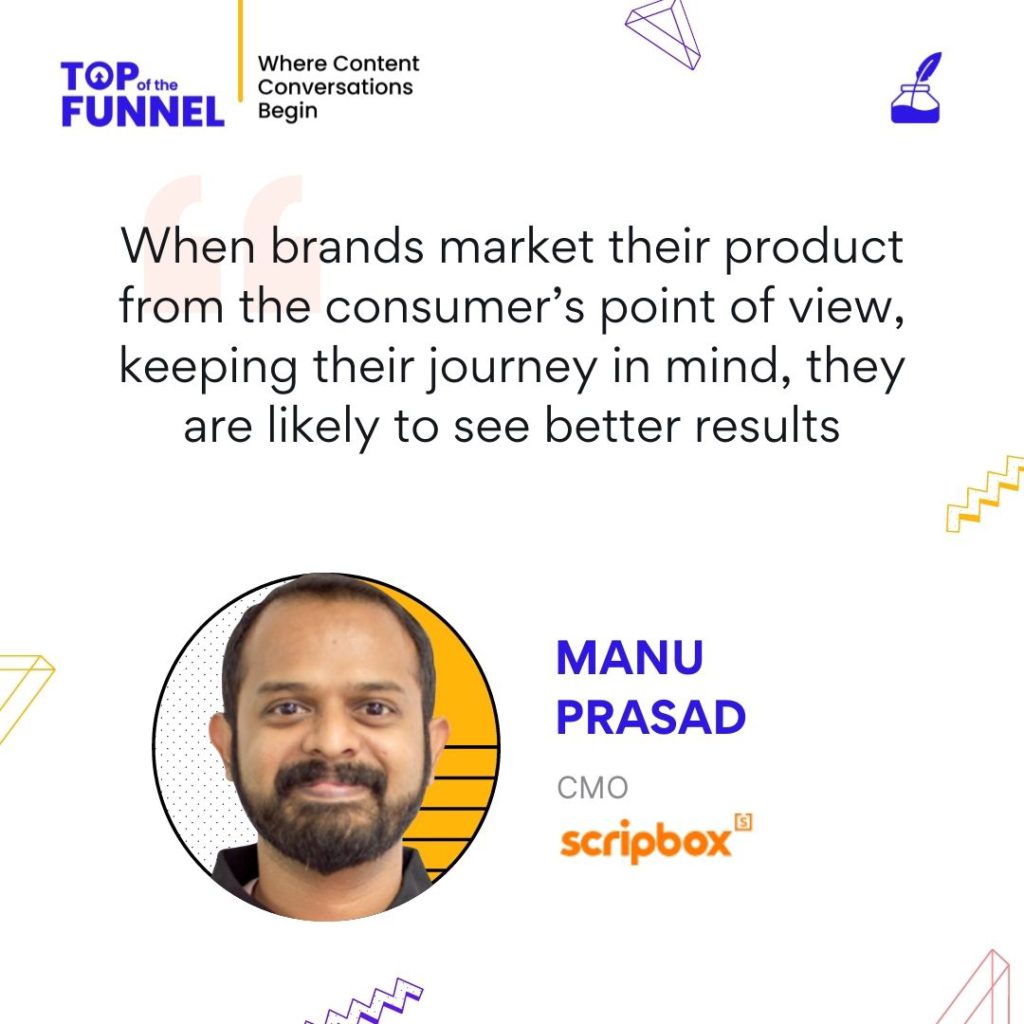
Natasha Puri: It is educative, highly-informational. Am I right? You are taking them down the funnel. Unlike your previous industries, there is no sale to be made. On that note, what are two or three pillars of your content strategy? Help me understand the structure of your team. You are creating a vast amount of content. It has to be accurate and relevant. Fashion is not based on accuracy per se. It is a lot more subjective.
Manu Prasad: There is always marketing content, which is about providing a deep understanding of what we are as a service provider to you. There is a customer side of it. What does the customer want to know to sign up and remain with you? A lot of it is top-of-the-funnel, educative content. A lot of it is also journey mapping and communications. In this journey, you have emails, SMS, notifications, and so on. All these are content too. And, there is another brand side of it. It is not just about advertisements. You are coming from that dynamic world of e-commerce, fashion, furniture to fintech. It is a dry subject.
How can you make it more interesting for a consumer? You want to talk about money, but not in such a boring way, that you do not even want to talk about it. These are the different aspects of content. We do not think about it in terms of pillars of content. It chains you into creating and writing content that may not be suitable for the customer. We look at it from a customer journey point of view. How can we create content to make them comfortable? How to produce content that would work for a customer at any point in their journey, whether it is audio, visual, or text? What is the kind of content that would work for them?
We have around three to four teams. Within the content team, we work with a lot of freelance writers. We have a couple of writers on board. They deal with a bunch of content. There is a lot of work regarding SEO. We do not work with an army of writers. The SEO content has changed a lot. I remember there was a time when an army of writers just churned out SEO content in e-Commerce companies. Now, it is not tech SEO. So, it is much easier to make clusters and work around that and be careful about the kind of content you are putting out.
Google is also moving towards displaying relevant content for the users and ranking them accordingly. It is actually better for it makes it easier to create content that is relevant for the consumer, rather than just punching a bunch of keywords to ensure that the search engine would pick it up. A lot of things have changed around that too. We have a brand, PR, Creative, and a bunch of writers working to create content. They help put out SEO content, blogs, and also help in creating the other forms of content like videos and many more, that we are working on.
Natasha Puri: Could you talk about the different formats of content? Is the Google algorithm a starting point? Do you think of repurposing content across channels, or do you create content specifically for some channels?
Manu Prasad: It is the latter The moment we say that we are refurbishing content across platforms, we are assuming the nature of the users of a certain platform. Let us ignore the search. It is more technical. Let us talk about Youtube as a search channel. How do you consume the content for different channels? You do not go to your feed and then, think of what to watch. Typically, you are going to Youtube and searching for something. And, then there is a rapid fall down, one by one the videos keep coming. It is more of a search engine than a display medium.
There is enough search happening on these platforms. Let us look at platforms like Facebook or Linkedin or Amazon. These are obviously different. If you are shopping, I will show you something that you may like. In these platforms, you are searching for something. But, you do not search for something on Facebook. You are looking to spend some time there. You do not have a vested interest to consume some type of content there, unlike the search engine, or Amazon. Therefore, my opportunity to tell you an interesting story and engage with you is completely different.
If I think about my content pillars, then create some content, and distribute them across platforms, then the entire strategy goes for a toss. You would rather look at Facebook and see what they are there for. How can I make it creative? How can I make it interesting for the user so that, they will be drawn in, and then continue their journey? It is opposite to Youtube, where people are coming to search for ‘XYZ.’ How do I show a relevant video that will align with my customer’s search, and also draw them in? They are distinctly different. So, we do not have a strategy for repurposing content here. The channel defines usage, and usage determines the kind of content you create.
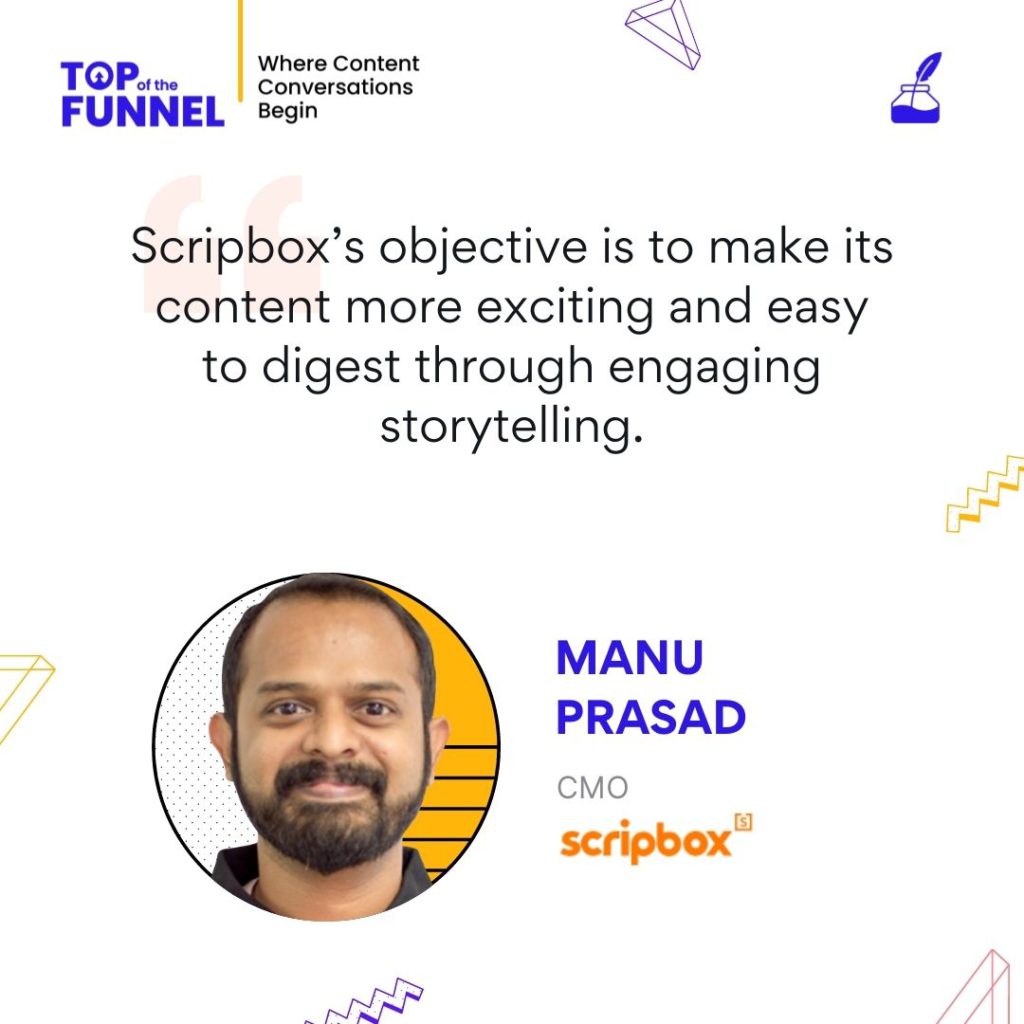
Natasha Puri: What are the two things that challenge you and excite you the most about content in the Fintech space?
Manu Prasad: The first thing is the mental availability of the customer. I can say that I am a fintech player, so I will consume this type of content. The customer is exposed to a variety of content. I have to cut through the noise of food. Fashion, and so on. How can I make it interesting for the customer? This is the primary challenge, in my opinion. To draw the customers in and convince them that this is good for their long-term goal is challenging itself. I am restricting myself to only talking about investing because loans are easy. Giving money is reasonably easier than asking people to invest money. I cannot tell you that your money will grow tomorrow. It will take a couple of years. Even in Fintech, if I tell you that you will get money, it works for it is instant gratification.
We have to look at this in the customer’s lifecycle, where there is a lot of e-Commerce stuff going on. We want to talk about entertainment and TV shows. On top of that, if we bring in the decreasing attention span of the user, it becomes even more challenging. I am not even interested, so how do you make me stay? The increasing challenge that does not get spoken about enough is the decreasing shelf life of platforms themselves. In the early days of Facebook, you built an organic following on Facebook by working hard to create relevant content. Brands invested in content like Myntra. Over time, you had to pay to attract consumers. What happens to these investments? How do you measure the utility of these investments? The processes and how you think about it make it different.
Let us talk about Tiktok in the past couple of years. It was going on and off for about 5 years, and now it is gone. It is not a tech disaster. It is a government ban. The complexities that could affect your content strategy have increased crazily. Today, if you are in marketing and you want to create content, you have to ask where you would buy, where you would invest, and how would you create. I think these are important. We can do something at the moment, but it is these content strategies that we must think about.
We have spoken about challenges. Let us talk of opportunities, for it is more of a playing field there. I think that both of my opportunities are connected to storytelling, like an umbrella. The explosion of content creators, influencers, and the types of content that you can create. You have branded content, product placement, and a host of other options available. You can find context and content relatively easier to the ethos of your brand. It is not a small shelf from which you have to choose. Mixing content and commerce is working. Platforms themselves are creating. It is changing considerably.
The tech side of things is also changing. You have VR, gaming platforms, and many more. There is an emerging class of marketers, who are calling social media legacy media. Traditional media is called legacy media. Social media is so 2010s. Let us talk about the things that are currently happening. Let us get on Fortnight and Discord. This is what they would be talking about. The technology explosion has opened up a lot of opportunities for marketers, as well as content creators.
Natasha Puri: We have spoken about storytelling and branded content. Let us talk about some of your successful campaigns, that you deem successful. And, how do you measure the success related to these campaigns?
Manu Prasad: We were talking of fintech being a dry space. I am not talking in terms of the best and most popular campaign that we did. But, we did a playlist thing on Youtube, and it is one of my most favorite campaigns. It is called FAQ, which is Frequently Asked Questions. It is related to the kind of questions that people do not ask often. Let me give you an example. The most common search in terms of mutual funds is ‘best mutual funds’ and something similar to that. Let us say that you decided to buy some mutual funds, out of those 300 million search results. After three months, let us say that you decided to search that query again. You will most likely not find the same set of mutual funds. It will be similar, but it won’t be the same. So, will you sell what you had bought? What will be your exit strategy? We talk about that. So, we steer the customers to ask the right set of questions. We do not talk about the right mutual fund to buy. We break down the ‘best’ in terms of the best kind of content.
Our objective in terms of content play is to help people make better decisions. We have done our share of content and webinars. Instead of having people talk to the audience, we wanted to create a storytelling approach. We took examples from the 2008 recession and why Singapore is developing in a way to make our point. We were talking about different kinds of wealth management. We were talking about questions that you should be asking.
One of the biggest challenges for us is to make it interesting for you so that, you continue to listen to us and can make some sense out of it. Let us start thinking about money differently. This was a kind of metric for our success.
Other metrics were what is my cost per view, whether visitors were coming to my page, whether those people were staying or bouncing off. These were the kind of metrics that we looked at. The quality of messaging and responses define our success more than anything else.
Natasha Puri: You can see that a lot of fintech content is being accessible to a younger audience. It is more of an ecosystem play. You look at the ads and you know that there is a target audience. I would believe that as a marketer, handling a new demographic is exciting.
Manu Prasad: Our content is mostly for people above 35+. I am not saying that it is not for a younger audience. Our focus is more on wealth management than just fintech. There is a reason for that. People are more conscious about money, their investments, It is better to build financial products for that cohort of generations with a certain level of maturity. It is better rather than being like, “There is Bitcoin on this platform. I am not investing in it.” This is not a dig at Bitcoin. When you are young, you think that life will go on. But, it is not like that. Lifestyle changes happen when you reach 30. It needs planning to get there. Your health and family life becomes a concern.
Natasha Puri: Did Covid not change any of that?
Manu Prasad: People have become conscious of their savings and creating a long-term savings plan. But, I do not think that normalization happens this fast. The younger you are, the more you believe in the world and you are ready to take it on. The mindset is different.
Natasha Puri: My last and final question to you. We spoke a lot about the past and present content. What is the future of content in the fintech space? We spoke a lot about opportunities. Maybe they will come into this. What is it that you are looking forward to?
Manu Prasad: in 2010, the digital space was far limited than it is today. The numbers state it. It was about 4 to 5% and now, it is 28%. A jump has happened. In the US, it is closer to 60%, if I am not mistaken. There is a huge way for us to go. The future of digital marketing is booming. I am going to be a bit more qualitative when I talk of the fintech space. If you look at it, the last couple of years has been different. There has been a high level of digital transformation in personal finance. From using Google Pay for transitions to exploring the range of transactions that are made available to us, customers have also gone through different stages of maturity. You buy products from Amazon and you are happy. As you become a little mature, you probably need a little more help in deciding if that is right for you. It is more personalized.
In the older days, your relationship was with your advisor, customer relationship manager, and so on. Would you trust a digital financial advisor for that service online? It is possible because the whole of it is online. As a marketer, you will think of the conventions. How to use content here? Keeping aside demographics and products, let us look at it from a culturally nuanced point of view. As a culture, we do not have deep conversations Money is a hush-hush thing. You do not ask about someone’s salary.
The focus of a lot of our content would be to assert that it is okay to talk about money. You talk about mental health. Suddenly, there is a lot of content around mental health. You can talk about financial wealth. You can go to a lot of directions from this space. Using content to break into that conversation is important.
This is why I think that the content marketing aspect of content has a bright future in the fintech space.
Let us talk about formats. We had socials and now, we have AI. There is a new format for interacting with content. Without knowing anything about the cultural landscape, AI can throw so much content at you. What is the content that you may like? As I said, gaming is another platform. Fortnite was huge. We have Marvel and DC on the same platform. How is that possible? It is a huge thing for me. You look at podcasts and discord and figure out some strategy. There are a lot of things happening around content and formats. In Amazon, you have something called live shopping. Your entire arena is open for warfare.
We have only scratched the surface of content possibilities and what is the kind of media that we can use. I might get a little philosophical here. We use social media to share moments right? Then, we are creating moments to share them. Now, we are onto sharing only those moments that would get us valued and appreciated. First, the tools came, and then, they shaped us. We do not know its impacts as an individual, or as a community. That is what makes it so exciting.
Natasha Puri: We have our work cut out for us. All the changes that are happening in terms of technology and platforms are so exciting, but also intimidating. Thank you so much for having this conversation. On that note, I do not think fintech content is boring. It has lots of possibilities, and it is a great place to be. Having those honest conversations about financial wealth and content created for women is so exciting. Thank you. Great conversation.
Manu Prasad: Thank you so much.
Latest Blogs
Explore how Google’s 2025 AI search updates triggered ranking chaos. Learn actionable strategies to adapt your SEO for AI Overviews, zero-click searches, and SERP volatility. Stay ahead now.
Learn how to rank on AI search engines like ChatGPT, Perplexity, and Gemini by optimizing your content for authority, structure, and relevance. Stay ahead in AI-driven search with this strategic guide.
Explore the best healthcare SEO services for your medical practice. Improve online visibility and effectively reach more patients in need of your services.
Get your hands on the latest news!
Similar Posts
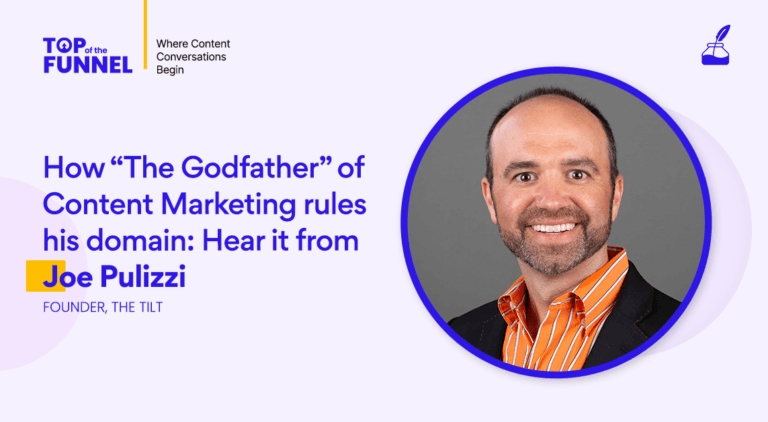
Expert Speak
18 mins read
Season 2 Episode #1 How “The Godfather” of Content Marketing Rules His Domain: Hear It From Joe Pulizzi
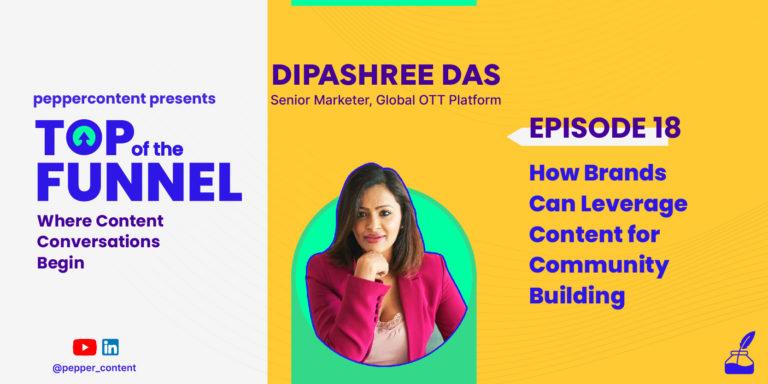
Expert Speak
16 mins read
Episode #18: How Brands Can Leverage Content for Community Building
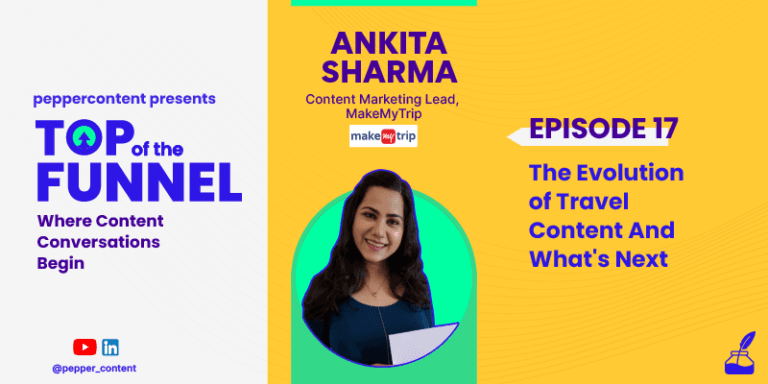
Expert Speak
11 mins read